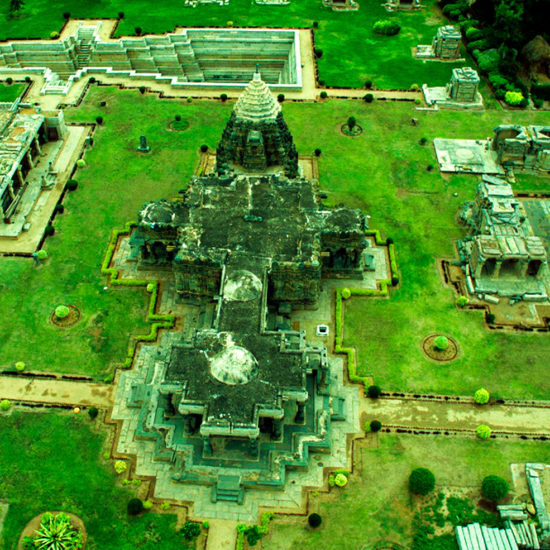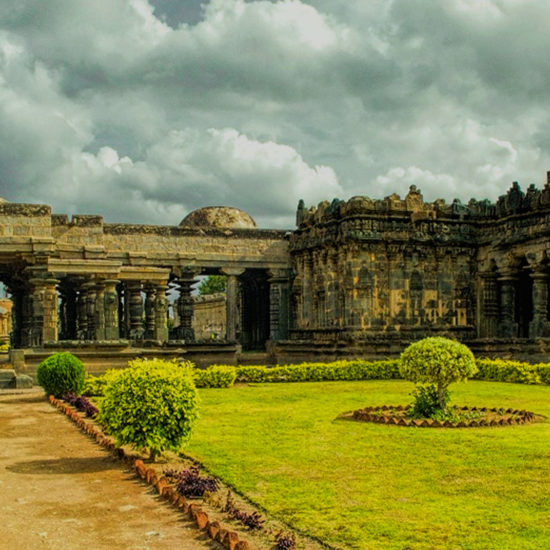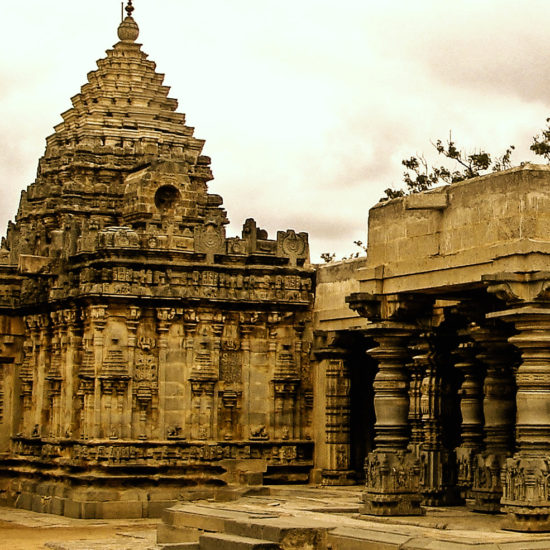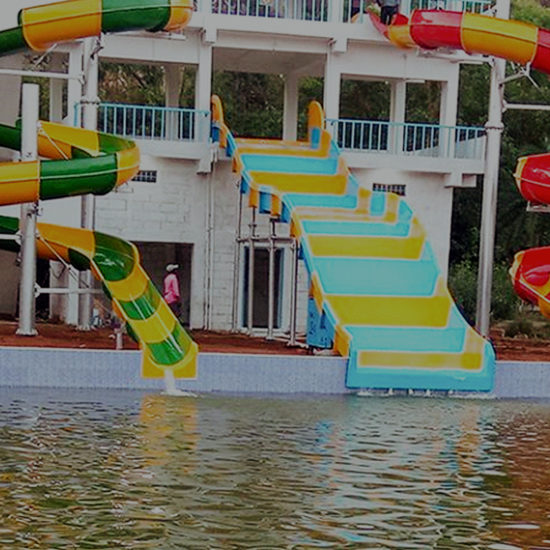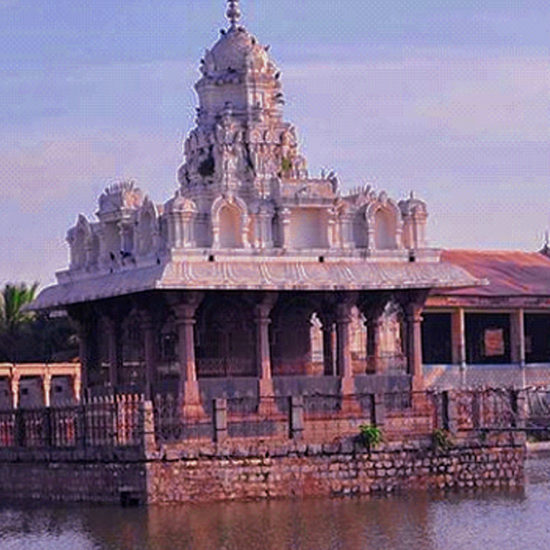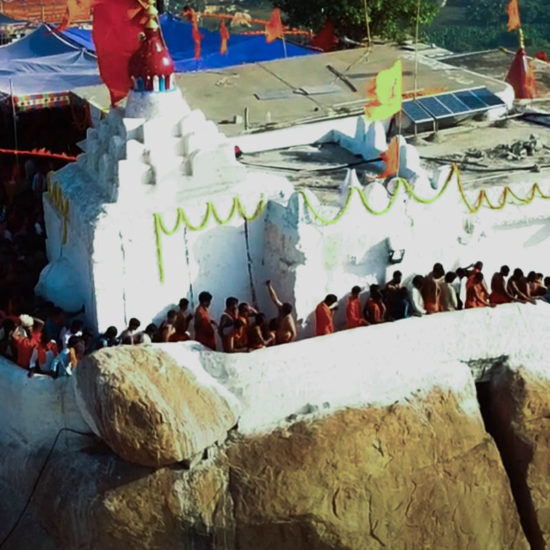Koppal is a fairly new district of Karnataka which has been carved out of Raichur district. It is surrounded by Raichur in the east, Gadag in the West, Bagalkot in the north, Ballari in the south.
The UNESCO World Heritage Site of Hampi also covers some areas of Koppal district including Anegundi, which is home to the mythical kingdom of Kishkinda of Ramayana fame.
In the past Koppal was referred to as ‘Kopana Nagara’. Koppal has been part of many kingdoms including Mauryas, Shathavahanas, Gangas, Nizams, Hoysalas and Chalukya Dynasties. Anegundi of Gangavathi Taluk was the earliest capital of the great Vijayanagara Empire. The old palace and fort still exist here and is the location for the annual “Anegundi Utsava”.
Traditionally farming has been the main occupation in this district. Geographically, Koppal is a stretch of rocky terrain on one side and acres of dry land on the other wherein agricultural crops like Jowar, Ground-nuts, Pomegranates, Grapes, Figs etc are grown. It is also a big centre for paddy cultivation and export and hosts around 100 rice mills mainly centred in Gangavati and Karatagi talukas. Hence, called the “Rice Bowl of Karnataka”. This Place is also one of the best seed production centres in the state. Several national seed companies have seed production centres for flowers, fruits, vegetables and pulses here.
Koppal is also known for its unique wooden Kinhal Toys which has a Geographical Indications (GI) tag. Phalguna annual fair in Kanakagiri and Anegundi Utsava are two popular celebrations in Koppal district.
For further information, visit the official district website click here!
Adventure/Activities
- Kishkinda Water Park: Kishkinda Water Park is located in Anegundi, and very close to Hampi which is around 5 km across the Tungabhadra River. The park is spread over 8 acres and surrounded by beautiful landscape and a lake. The Water Park has water slides, swimming pools, a cascade, self-pedal boating, a Children's park and a playground.
- Picnic near Munirabad: Vast water spread of Tungabhadra reservoir in Munirabad and Japanese type ornamental garden are ideal for family outings and picnics.
Heritage Sites
- Koppal Fort: Regarded as being one of the strongest forts of the country, it is a major tourist attraction in Koppal. Although there is no clarity on who built this fort, it was acquired by Tipu Sultan in around 1786. He rebuilt and strengthened the fort with the help of French engineers. In 1790, the British forces with the help of Nizams took over the fort.
- Palkigundu Ashoka Inscription: 3 kms from Koppal city, 2300 years old inscriptions on two giant boulders with a flat rock on top, resembling a palanquin.
- Anegundi: Just across the Tungabhadra River is the fortress town Anegundi, pre-dating Vijayanagara and the city’s 14th century headquarters. More ancient than Hampi, Anegundi lies in the mythical kingdom of Kishkinda, ruled by monkey king Sugriva (from the Epic Ramayana). The Anjaneya Hill is, believed to be the birthplace of the monkey god Hanuman, can be easily spotted from Anegundi, thanks to the temple at the hilltop and a white trail of steps zigzagging all the way to the top. Anegundi and its tranquil surroundings are dotted with forgotten temples and fortifications. The dilapidated Huchappayana Matha Temple, near the river, is worth a visit for its black stone lathe-turned pillars and fine panels of dancers. The other places of tourist interest are the sacred Pampa Sarovara, Chintamani Temple and the Ranganatha Temple.
- Pampa Sarovar: Pampa Sarovar is a beautiful lake that is located in Anegundi that lies to the south of the Tungabhadra River. It is one of the five sacred sarovars (holy lakes) in India. In Hindu mythology, Pampa Sarovar is regarded as the place where Goddess Pampa (a form of Goddess Parvati), performed penance to show her devotion to Lord Shiva. It is famous for its religious significance and is revered by the Hindus.
- Sanapur Lake: Sanapur Lake is a little-known attraction around Hampi. It’s a beautiful lake formed by an irrigation reservoir and is thus a great excursion point near Hampi. The surrounding scenery with boulder hills all around makes this lake even more scenic. The drive to the lake is also mesmerizing as it winds through paddy and banana plantations. Enjoy a coracle ride here to make the trip more fun.
Religious Places
- Mahamaya Temple & Navalinga Temple, Kuknoor: Kuknur is a village 6 kms north of Itagi, known for its temples dating back to the times of the Chalukyas. It is popular for its Mahamaya Temple and Navalinga Temple. Mahamaya Temple has a mention in the epic Mahabharata. It is also believed that a temple dedicated to Goddess Kali is hidden underneath the present temple complex. Nearby is the unique Navalinga Temple. Believed to be built in 9th century by the Chalukyas, the Navalinga Temple houses nine of the 12 Jyotirlingas (the sacred devotional representation of Lord Shiva worshipped in the form of a linga or the phallus symbol of the deity) and is probably the only place to have such lingas. Each linga has a separate sanctum sanctorum and a shikhara.
- Mahadeva Temple, Itagi: Mahadeva Temple is believed to be built by Mahadeva, a commander in the army of the Western Chalukya king Vikramaditya VI and was built in 1112 CE. This architectural masterpiece is dedicated to Lord Shiva. The entrance of the temple has ornate pillars. The pillars are lathe-turned and have beautiful carvings. The sanctum, which has a linga, is surrounded by 13 other minor shrines, each with its own linga. The temple is well-proportioned with a shikhara and has wide mantapas. This temple is truly a great testimony for the unmatched architectural skills of the Kalyani Chalukyas. No wonder why it’s known as “Devalaya Chakravarthin” (meaning Emperor among Temples) and is considered to be the one of the finest in the state.
- Kanakagiri: Kanakagiri is believed to be the ancient place where Kanaka muni had meditated. His rigorous meditation was answered by the Gods and the skies rained gold; hence giving the place its name. Kanakagiri is considered very sacred to Hindu pilgrims so much so that if a person is unable to go to Tirupathi, they can take the pilgrimage here instead. Kanakagiri is also famous for its 600-year-old Kanakachalapathi Temple where an unusual Parameshwara statue stands. Lord Shiva, usually depicted as a linga, is given a full form here. There is also a four headed Brahma idol and a beautiful tank within the temple complex.
- Huligemma Devi Temple, Huligi: Huligemma Devi Temple is a 13th century temple devoted to Goddess Huligemma (a form of Goddess Durga) and is situated in a village called Huligi. This temple is on the banks of Tungabhadra River. The temple tends to be very crowded on Tuesdays and Fridays, as these are the days dedicated to this deity.
- The Ashokan Edict of Gavimath and Palkigundu: Gavimath and Palkigundu are the two adjacent places in Koppal district at a distance of around 3.5 kms between them. They have a thing in common – that of an important piece of history of ancient India. They are the sites of the famous Minor Rock Edicts of Mauryan Emperor Ashoka. The Mauryan Emperor Ashoka ruled over most of India more than 2200 years ago. He is considered as one of the greatest kings in the history of the world. He made non-violence, tolerance, charity and kindness the core of his public policy. And it was his patronage that Buddhism eventually ensured its spread around the world. After the Kalinga war, Ashoka issued 33 edicts all over his empire to publicize his policies and propagate the Buddhist message of non-violence and dharma. These were engraved on boulders, stone pillars, stone slabs and cave walls. A total of 9 have been found in Karnataka till now. The Gavimath and Palkigundu edict are two of such messages and it’s believed to be inscribed in around 258 BC, making it one of India's oldest written records. These two edicts are in Prakrit, written in Brahmi script.
- Chintamani Temple: Chintamani Temple is a white, intriguing structure wherein you can retrace scenes from the epic Ramayana. The temple is dedicated to Lord Shiva. The area nearby is steeped with Ramayana legends including the cave wherein Lord Rama met Sugreeva. It also houses the spot from where it is believed Lord Rama had aimed and shot his arrow to kill Baali during his fight with Sugreeva. The spot is marked by a small stone that bears a pair of footprints which is believed to be of Lord Rama's.
- Anajanadri Hills: Believed to be the birthplace of the Hindu God, Lord Hanuman, the Anjanadri Hills is located near the UNESCO Heritage Site Hampi. A must-to-visit pilgrimage is also famous for its panoramic landscapes and mesmerising views.
Others
- Nava Brindavana: Nava Brindavana is situated on a small island on the Tungabhadra River in Anegundi. Nava Brindavana has the Samadhis (tombs) of nine Hindu saints, belonging to various time periods. Nearby, there are two temples dedicated to Lord Ranganatha and Lord Hanuman.
- Gangavathi: Has an agricultural research institute and Virupaksha temple.
- Kinhal Wood Carving: Kinhal wood carving is the lacquerware woodcraft that is synonymous to the region. It takes its name from a small town in Koppal district. The craft was highly patronized by the Vijayanagara kings. Using a paste of tamarind seeds and pebbles to stick carved parts of wood, the Chitragars or artists create exquisite figurines and idols. A mixture of pebble powder and liquid gum is then used to sculpt ornaments and jewellery on these figures. The breathtaking designs of the Kinhal art can be easily differentiated by other forms of art by its vibrant colours and intricate designs. Kinhal toys also has a Geographical Indication (GI) tag under the World Trade Organisation.
- The Kishkinda Trust: The Kishkinda Trust (TKT) in Anegundi, was founded in 1997 by Shama Pawar. It aims to empower communities and helps them create a way of life with their culture being the fulcrum of all activities- ranging from handicrafts, cuisine, art forms, design, agriculture, education, etc. The Trust assists the villagers of Anegundi at grassroots level to build self-sufficiency and to conserve their unique historical heritage.
Tour Location




